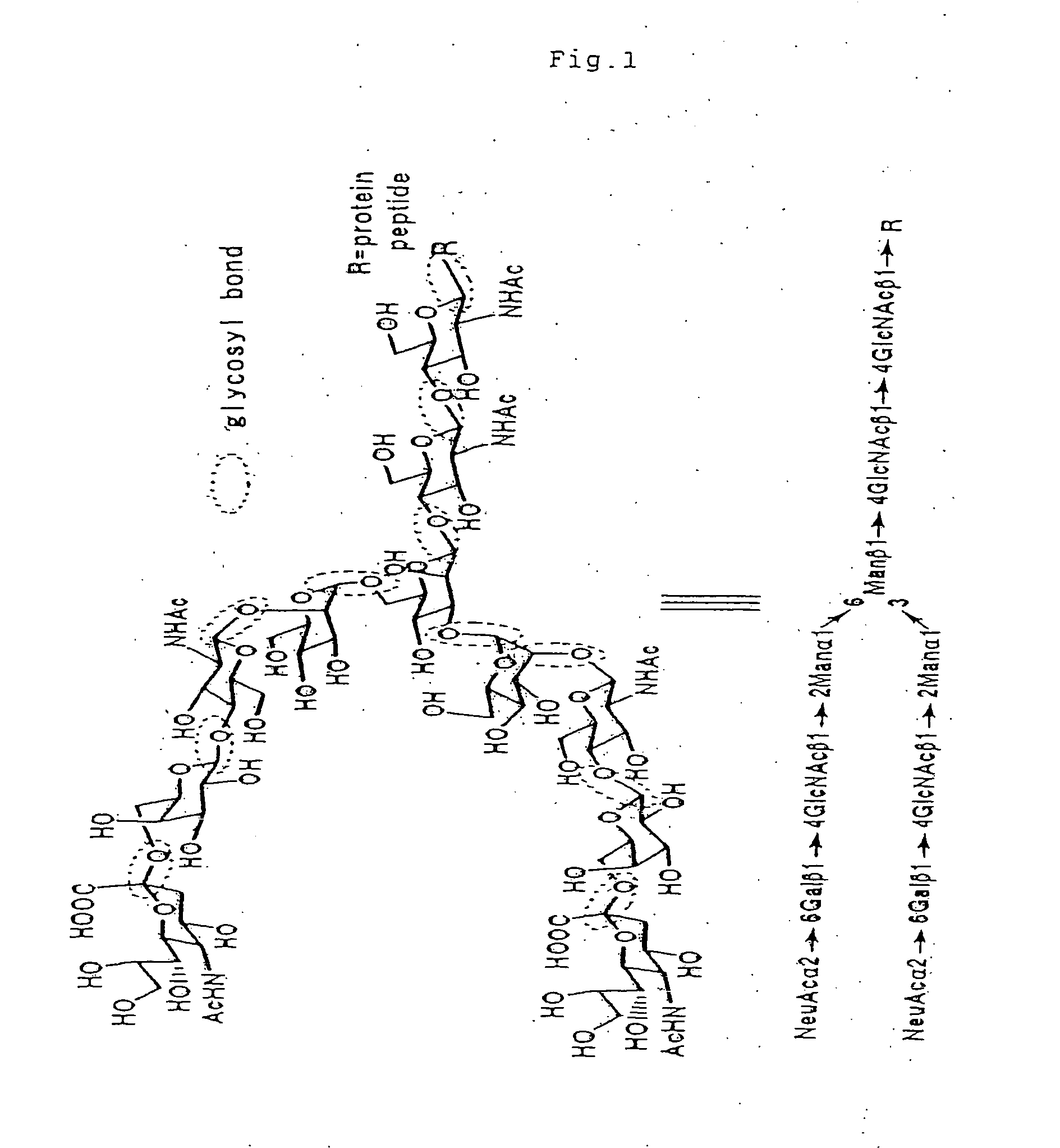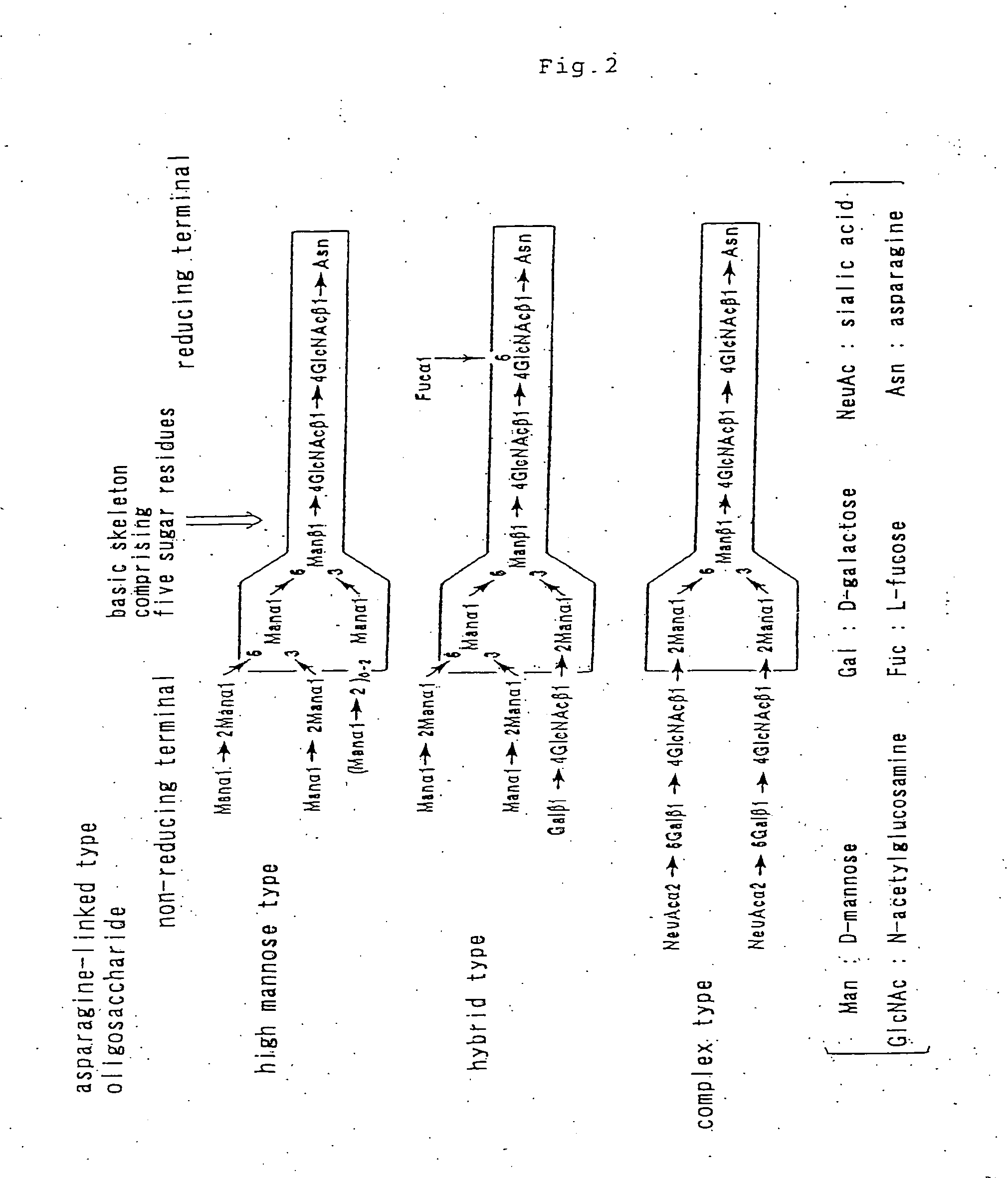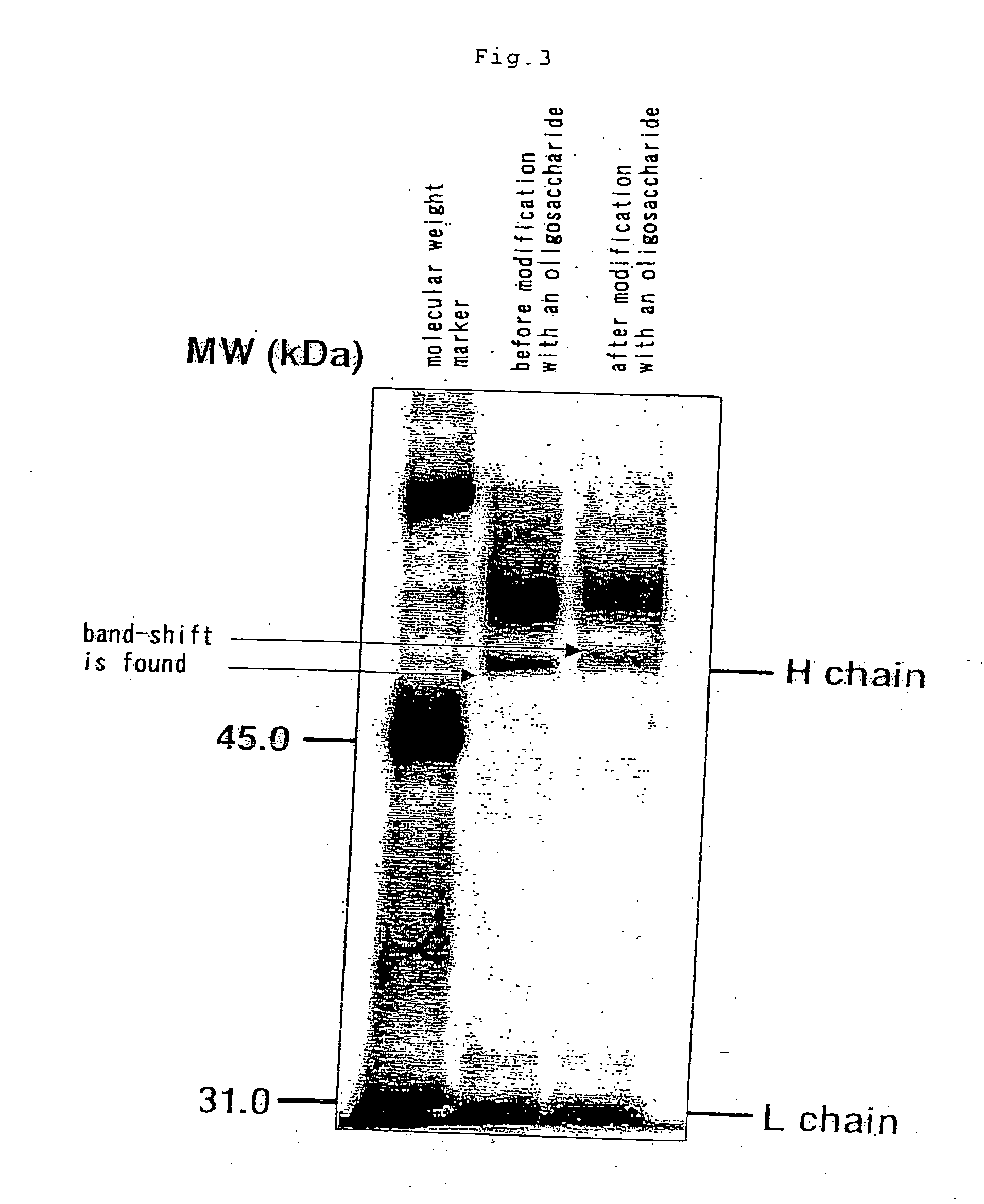Aminated complex-type sugar chain derivatives and process for the production thereof
- Summary
- Abstract
- Description
- Claims
- Application Information
AI Technical Summary
Benefits of technology
Problems solved by technology
Method used
Image
Examples
reference example 1
Preparation of Asparagine-Linked disialooligosaccharide
[0039] A 500 mg quantity of roughly purified SGP (sialylglycopeptide) and 10 mg (319 μmols) of sodium azide were dissolved in 25 ml of tris-hydrochloric acid-calcium chloride buffer solution (0.05 mol / l of TRIZMA BASE, 0.01 mol / l of calcium chloride, pH=7.5). To the solution was added a solution of 50 mg of actinase E (protease, product of Kaken Seiyaku) in 5 ml of tris-hydrochloric acid-calcium chloride buffer solution, followed by standing at 37° C. The solution was freeze-dried 115 hours later. The residue was purified by gel filtration column chromatography twice, giving 252 mg of the desired asparagine-linked disialooligosaccharide.
[0040]1H-NMR (30° C.) δ5.13(s, 1H, Man-4-H-1), 5.07(d, 1H, J=9.5 Hz, GlcNAc1-H-1), 4.95(s, 1H, Man-4-H-1), 4.77(s, 1H, Man3-H-1), 4.61(d, 1H, J=7.6 Hz, GlcNAc2-H-1), 4.60(d, 2H, J=7.6 Hz, GlcNAc5, 5-H-1), 4.44(d, 2H, J=8.0 Hz, Gal6, 6-H-1), 4.25(bd, 1H, Man3-H-2), 4.20(bdd, 1H, Man-4-H-2), 4.12...
reference example 2
Preparation of Asparagine-Linked disialooligosaccharide Wherein Amino Group Nitrogen of Asparagine is Protected with Fmoc Group
[0041] An 80 mg quantity (0.034 mmol) of the asparagine-linked disialooligosaccharide obtained in Reference Example 1 was dissolved in a solution of 2.7 ml of distilled water and 4.1 ml of acetone, and to the solution were added 34.7 mg (0.103 mmol) of 9-fluorenylmethyl-N-succinimidyl carbonate (Fmoc-OSn) and 11.5 mg (0.137 mmol) of sodium hydrogencarbonate. The mixture was stirred at room temperature for 2 hours. After the completion of reaction was recognized by TLC, the resulting solution was concentrated in a vacuum to remove acetone. The residue was applied to a column (ODS column) filled with a silica gel having octadecylsilyl group attached thereto) for purification, affording 60.1 mg of the desired product, i.e., Fmoc-asparagine-linked disialooligosaccharide in a yield of 68%.
[0042]1H-NMR (30° C.)
[0043] 8.01(2H, d, J=7.5 Hz, Fmoc), 7.80(2H, d, J=7...
reference example 3
Preparation of HOOC-Arg-Glu-Glu-Gln-Tyr-Cys-Ser-Thr-Tyr-Arg-Val-NH2
[0044] Into a solid-phase synthesis column was placed 370 mg of HMPA-PEGA resin, which was thoroughly washed with CH2Cl2 and DMF for reaction.
[0045] Fmoc-Arg(OtBu)-OH, 1-mesitylenesulfonyl-3-nitro-1,2,4-triazole (MSNT) and N-methylimidazole were dissolved in CH2Cl2, and the solution was stirred for 5 minutes and thereafter placed into the solid-phase synthesis column containing the resin, followed by stirring at room temperature for 3 hours. The resin was thereafter washed with methylene chloride, isopropanol and DMF and dried. The unreacted hydroxyl group on the solid phase was thereafter acetylated using a 20% DMF solution of acetic anhydride for 20 minutes for capping. The resin was washed with DMF and stirred along with a 20% piperidine / DMF solution for 20 minutes to remove the protective Fmoc group, whereby resin-Arg-NH2 was obtained. The product was washed with DMF and dried.
[0046] The resulting resin, and g...
PUM
 Login to View More
Login to View More Abstract
Description
Claims
Application Information
 Login to View More
Login to View More - R&D
- Intellectual Property
- Life Sciences
- Materials
- Tech Scout
- Unparalleled Data Quality
- Higher Quality Content
- 60% Fewer Hallucinations
Browse by: Latest US Patents, China's latest patents, Technical Efficacy Thesaurus, Application Domain, Technology Topic, Popular Technical Reports.
© 2025 PatSnap. All rights reserved.Legal|Privacy policy|Modern Slavery Act Transparency Statement|Sitemap|About US| Contact US: help@patsnap.com



